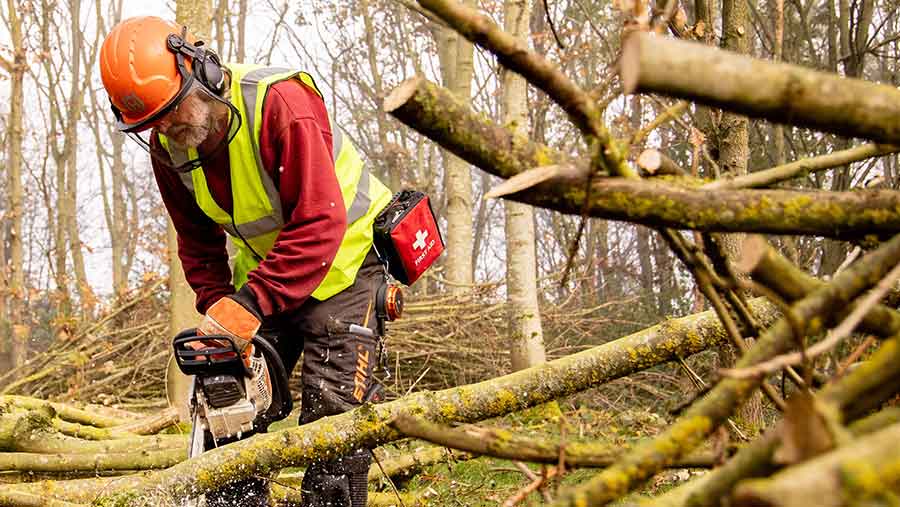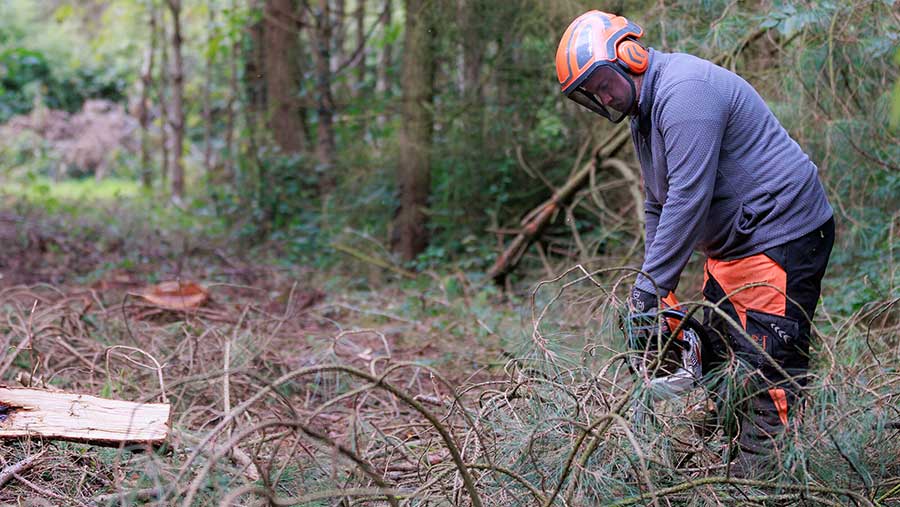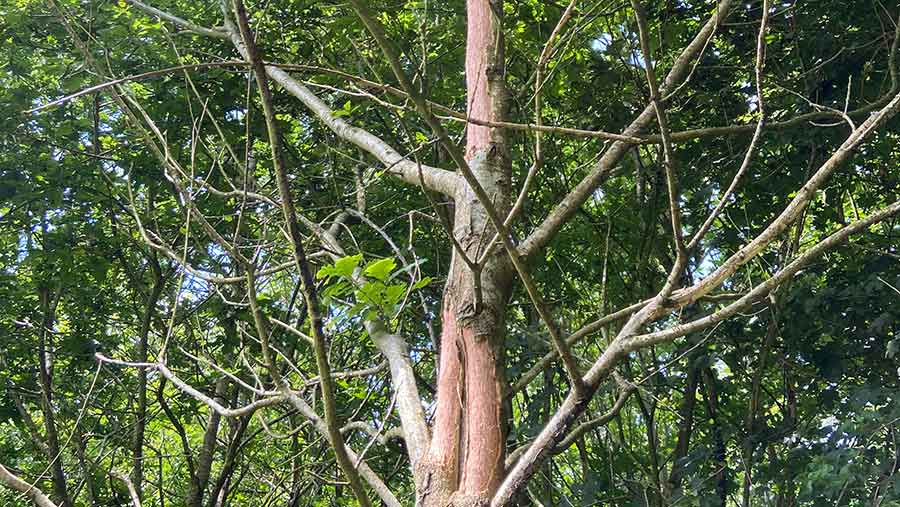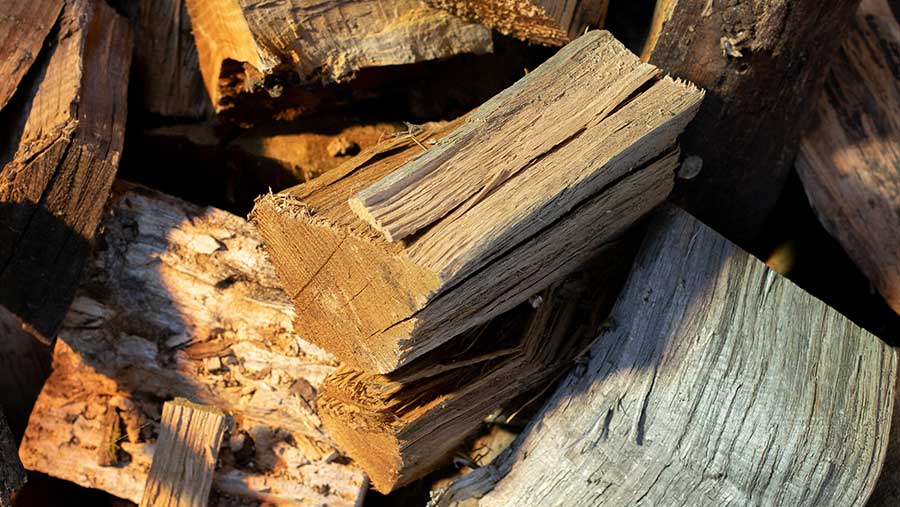Advertiser content
Advice and grants for managing woodland on your farm
 © The National Forest Company
© The National Forest Company Proactively managing farm woodland is more important than ever if trees are to tolerate the extreme weather events caused by climate change and be resilient to the greater threats of pests and diseases.
National Forest woodland manager Ed Hiorns says more landowners within the National Forest are bringing woodland into active management.
Rates of management in the National Forest are in fact higher than elsewhere in England.
There is also a surge in interest to increase management across England as trees become an important part of the climate change and biodiversity conversations.
With wide-ranging support and grants available, a farmer doesn’t need to become a forester to implement the principles of good woodland management, says Ed.

© The National Forest Company
“Farmers can become foresters but to do that overnight is unrealistic which is why there are a range of support networks out there, both in the National Forest and nationally.’’
He advises that a good first step for a farmer is to identify their objectives from existing woodland, then seek good advice and create a management plan to address the opportunities for that woodland, and the threats.
Woodlands take a long time to establish and management helps them on the path to maturity.
Woodland management is not new – there is evidence of interventions present in all UK ancient woodland, however historic, says Ed.
What is new are many of the added pressures on woodland from pests and diseases but bringing it back into active management can be a defence against these.
Deer and grey squirrels are not novel threats but what has changed is the distribution and size of their populations living in and around woodland.
Grey squirrels strip bark, typically in trees between 10 and 40 years old with oak, birch, hornbeam, beech, willow, sycamore, field maple and sweet chestnut their most likely prey.
This results in deformed growth and losses estimated at £37m a year in England and Wales at current values.
“Many woodlands planted on farms tend to be focused on broadleaved species and with the loss of ash, this leaves oak and the other species listed as holding an ever increasing importance,’’ says Ed.
“Unfortunately, these species happen to be among the favourites for grey squirrels to damage.’’
Anecdotal reports suggest high levels of damage in 2024, there has also been a greater incidence of whole tree stripping.

Grey squirrel damage © The National Forest Company
“Squirrel damage can be really heart-breaking, a farmer may have grown trees for 20 years and those trees are then destroyed by squirrels if they miss the early signs,’’ says Ed.
Greater interaction with woodland will help flag up those problems before they escalate, he suggests. “The more interaction a farmer has with their woodland, the more they will pick up on changes caused by pests and diseases.
“Completing the National Forest Grey Squirrel Activity and Impact Assessment is a good step to monitoring damage each year and implementing control at the appropriate level.’’
Deer control has never been more important either with impacts to woodland habitats and other habitats including arable farmland rising.
There are grants available for grey squirrel and deer control both nationally and in the National Forest.
Deer impact tree establishment costs and, following establishment, cause damage by browsing and fraying therefore control is needed across most sites in the country including those in the National Forest.
“Fraying and bark damage can cause issues with growth and secondary infection while browsing will impact upon natural regeneration and coppice regrowth, limiting a woodland’s structural cycle,’’ says Ed.
Through the National Forest small grants programme, there are plans to expand the network of deer chillers in the Forest with the aim of increasing the volume of venison supplied to local markets.
Ensuring a diverse age and species range of trees is important.
Diseases like ash dieback and Phytophthora ramorum have highlighted how devastating disease can be on a woodland when there is a high population of a single species.
Diversity of species in farm woodlands, and how these were planted within the planting mix, was often overlooked in previous decades, Ed explains.
“Lessons have been learned from that,’’ he says. “The ambition is to achieve multi-aged, mixed multi-species woodland which enables it to be more resilient to damage by pests and diseases.’’
Ash dieback is resulting in major losses and that disease incursion needs to be managed, Ed advises.
“It can be very daunting but it needs to be approached proactively rather than kicked down the road because the sooner a landowner deals with it the sooner they can re-establish a healthy, multi-species woodland.
“Identifying and knowing if you have ash dieback is a key first step and guides such as the LEAF ash dieback guide are very useful for farmers to gain an understanding of the disease and its development and risks.’’
It is also advisable to deal with diseased trees early as they can still be worked safely by a farm chainsaw operator or contractors.

© The National Forest Company
If a tree surgeon is required to climb a tree it better done before a tree becomes too dangerous.
“This can be particularly pertinent for road side or public footpath trees where insurance implications must be considered,’’ says Ed.
Overcoming issues such as ash dieback can be achieved in a number of ways, with support available at a national level and, in the National Forest, from the National Forest Company.
“Grants are available for impacted sites and that money can be make or break for those doing the work needed in affected woodland,’’ says Ed.
“It is important to remember that each grant has a different criterion and engaging with a land or forestry agent or the grant awarding body itself is a good way to understand your eligibility and how to work towards a successful grant outcome.’’
Planned and pre-emptive management of trees means resources can be allocated through risk zoning – targeting areas in order of priority.
That allows a landowner to budget financially for that tree work and potential planting.
This approach reduces the likelihood of having to deal with ad hoc reactive tree measures which are often expensive because to the nature of the work and the need for it to be completed quickly.
For farmers considering bringing woodland back into management, Ed recommends they firstly consider what their objectives are and to get advice.
“They might have a loose idea before they look for that advice and that idea can cascade down when they have an objective and a plan,’’ he says.
Woodland management plans, which typically last 10 years, are applied for and approved through the Forestry Commission.
If the plan includes felling trees, the application should include a felling licence covering all planned works for the management plan term.
A management plan is helpful for a number of reasons, not least because it gives landowners the confidence that they can work through an approved plan each year, in known bitesize chunks.
Through following the plan they can be comfortable they are doing the right thing, Ed explains.
“Regardless of the objective for your farm woodland, whether its timber, game, biodiversity, woodland grazing, carbon capture, legacy or landscape, management of developing woodlands will without question enhance the outcomes and help to safeguard your habitat against the threats posed by climate change and pest and disease pressures.
If you’re interested in learning more about planting trees on your farmland or the support available to manage existing woodland, the team at nationalforest.org is on hand to help.
Provided by
The National Forest is a UK environmental charity focused on demonstrating a positive and sustainable future is possible for all.
